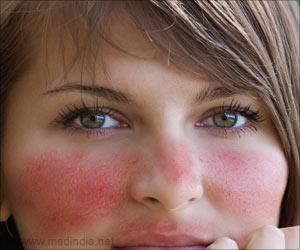Poison ivy, poison oak and poison sumac are the most well-known hazardous plants. When you are exposed to these plants, you may develop an allergic reaction to the oily resin in the leaves and stems, which can cause itchy rashes. In some cases, you may develop swelling and blisters. Often, the rash will appear in a straight line due to how the plant brushes against your skin. If you are exposed to these plants, immediately rinse your skin with warm water and avoid using soap as it may spread the plant’s oil. In addition, rinse everything that has vegetable oil on its surface, including pets and gardening tools. To relieve itching, Dr. Trevino recommends applying a short, warm bath, damp, cold washcloth to the affected area, applying calamine lotion, and taking antihistamines. If this does not help, or you have a severe reaction, see your dermatologist.
Spines and thorns of plants such as cactus, fig, mulberry and thistles can cause skin problems related to other common plants. If you are cut or scratched by these spines or thorns, you may experience skin reactions ranging from mild skin discoloration to small or large blisters. These plants can cause uncomfortable skin itching. Itching can damage the skin and increase the risk of infection. Spines, thorns and wood splinters can cause minor swelling when on the skin.
Some plants, such as stinging nettle, have sharp hairs on the leaves and stems that release a chemical into the skin that can cause hives and a burning sensation. Other plants, such as hogweed and citrus fruits, contain chemicals that cause discoloration of the skin when exposed to the sun, which can last for months or even years. Dr. Trevino recommends avoiding stinging nettle and hogweed as much as possible, wearing protective clothing, and washing the exposed skin immediately when gardening or handling them. He also recommends rinsing the skin and reusing sunscreen after eating or drinking citrus fruits while out in the sun.
Plants are not the only organisms that cause skin problems. People can be exposed to freshwater, salt water and aquatic organisms in domestic fish, which can cause skin reactions too.
When participating in recreational water activities such as snorkeling and scuba diving, swimmers should look out for corals, which are a common source of injury. If you touch or scratch your skin against the coral, it can cause rashes, stings and burns and hives. Dr. Trevino recommends rinsing any cuts or scratches on the coral with cold water and consulting a doctor about a tetanus shot. If the area is affected or coral fragments get stuck in the skin, see a doctor for treatment.
In water around the world, jellyfish sticks are a common, painful injury. The intensity of the stick depends on the type of jellyfish. The Pacific box jellyfish is one of nature’s most endangered species and is found on the Great Barrier Reef in Australia. Related species of jellyfish can be found on the tropical Atlantic coasts of South America, Mexico and the United States.
“Jellyfish stings can cause itching, swelling, burning, hives, and discoloration of the skin,” said Dr. Trevino. “Delayed reactions such as abdominal pain, headache and nausea also have been reported.“
Dr. Trevino has also told that if you are stung by a jellyfish, you should immediately get out of the water and rinse the affected skin with sea water. You can use vinegar to neutralize the venomous part of the jellyfish that is stuck in the skin and use a tweezer or scotch tape to remove the tentacles and stinging cells.
Walking barefoot in the sea can cause injuries if you step on marine animals such as stingrays and sea urchins. Stingrays have sharp, venomous tails and sea urchins have painful, elongated spines. Because they live underwater, fishermen and swimmers can be carelessly trampled and injured. Reactions include nausea, fatigue, discoloration of the site, swelling, or itching of the skin. If you have respiratory problems, you should seek medical help immediately.
Even at home, your skin is exposed to harmful bacteria in fish stocks. If you have a fish tank, be careful when cleaning it, as this can cause a skin tumor or infection that can lead to ulcers and medical treatment.
To protect you from skin conditions and infections from aquatic organisms, Dr. Trevino advises to avoid contact with marine animals, including coastal creatures; wear a wet suit when surfing, diving and snorkeling; wear gloves when collecting shells; avoid areas with shallow coral reefs; and walk with turbulence in shallow water where stingrays can meet. When cleaning your fish tank, it is recommended to avoid direct contact with those in the fishery and to wear thick gloves.
Sea creatures are not the only species that cause skin reactions. Insects can cause a variety of skin conditions, ranging from minor irritation to life-threatening reactions such as itching, discoloration or hives. The type of reaction error a person has depends on a variety of factors, including how the injury occurred and the person’s health.
The most common insects that people encounter are as follows:
- Bees/wasps/ants (which can cause a painful reaction where stung or bitten)
- Beetles
- Caterpillars/moths/butterflies (which can have a painful sting)
- Centipedes (which can cause painful stings)
- Millipedes (which can cause skin burns and discoloration)
- Mites
- Mosquitoes/flies (which are known to carry the West Nile, Chikungunya and Zika viruses)
- Scorpions
- Spiders (including black widow and brown recluse spiders)
- Ticks (which can cause Lyme disease and a red meat allergy)
“The best treatment for bug bites and stings is prevention,” said Dr. Trevino. “If you experience a bite or sting by an insect, treat the symptoms with over-the-counter antihistamines or see your dermatologist. Severe reactions may require emergency treatment with epinephrine or the administration of antivenom. If you develop a skin rash that doesn’t go away, see a board-certified dermatologist.“
He also recommends the following tips to avoid bug bites and stings:
- Use insect repellent. To protect against mosquitoes, ticks and other insects, use insect repellent that contains 20% to 30% DEET on exposed skin and clothing.
- Always follow the instructions on the repellent and reapply as directed. If you are also wearing sunscreen, apply your sunscreen first, let it dry, and then apply the insect repellent. Do not use sunscreen that contains insect repellent, as sunscreen must be applied liberally and often while insect repellent should be applied sparingly.
- Take measures to reduce tick-borne diseases such as mowing the lawn regularly and removing debris and leaves.
- Wear appropriate clothing. If you know you’re going to be out at night or hiking in a densely wooded area, dress appropriately to prevent bug bites. Cover exposed skin as much as possible by wearing long-sleeved shirts, pants, socks and closed shoes instead of sandals. For additional protection, pull your socks up over your pants and tuck your shirt into your pants. You can also pre-treat outer layers of clothing with insect repellent containing the active ingredient permethrin. Follow the directions carefully and allow the clothes to dry for at least two hours before wearing them.
- Use bed nets. If sleeping in the great outdoors, use bed nets to protect against mosquitoes. Look for one that has been pre-treated with pyrethroid insecticide. If it doesn’t reach the floor, tuck it under the mattress for maximum protection.
- Pay attention to outbreaks. Check the CDC Travel Health Notices website and heed travel warnings and recommendations.
- If you have a pet, they can also expose you to plants and insects that can cause skin reactions and diseases. They can transport ticks or brush up against poison ivy. It’s important to check your pets when they come in from outdoors, especially after hikes and walks, and if you think they may have been exposed to harmful plants, rinse them thoroughly with water.
When you travel to an area that are unknown to you, it’s important to research the area in advance to find out if there are any hazards from insects, plants, or aquatic organisms.
“Board-certified dermatologists know the skin reactions that can be caused by plants, bugs and aquatic organisms and they can diagnose and treat reactions,” said Dr. Trevino. “If you have questions about a reaction caused by a plant, bug or water creature, contact your dermatologist or healthcare professional.“
Source: Medindia



